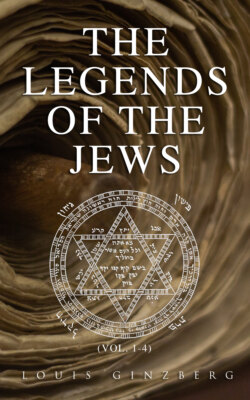Читать книгу The Legends of the Jews (Vol. 1-4) - Louis Ginzberg Ginzberg - Страница 41
SETH AND HIS DESCENDANTS
ОглавлениеThe exhortations of the wives of Lamech took effect upon Adam. After a separation of one hundred and thirty years, he returned to Eve, and the love he now bore her was stronger by far than in the former time. She was in his thoughts even when she was not present to him bodily. The fruit of their reunion was Seth, who was destined to be the ancestor of the Messiah.
Seth was so formed from birth that the rite of circumcision could be dispensed with. He was thus one of the thirteen men born perfect in a way. Adam begot him in his likeness and image, different from Cain, who had not been in his likeness and image. Thus Seth became, in a genuine sense, the father of the human race, especially the father of the pious, while the depraved and godless are descended from Cain.
Even during the lifetime of Adam the descendants of Cain became exceedingly wicked, dying successively, one after another, each more wicked than the former. They were intolerable in war, and vehement in robberies, and if any one were slow to murder people, yet was he bold in his profligate behavior in acting unjustly and doing injury for gain.
Now as to Seth. When he was brought up, and came to those years in which he could discern what was good, he became a virtuous man, and as he was himself of excellent character, so he left children behind him who imitated his virtues. All these proved to be of good disposition. They also inhabited one and the same country without dissensions, and in a happy condition, without any misfortune's falling upon them, until they died. They also were the inventors of that peculiar sort of wisdom which is concerned with the heavenly bodies and their order. And that their inventions might not be lost before they were sufficiently known, they made two pillars, upon Adam's prediction that the world was to be destroyed at one time by the force of fire and at another time by the violence and quantity of water. The one was of brick, the other of stone, and they inscribed their discoveries on both, that in case the pillar of brick should be destroyed by the flood, the pillar of stone might remain, and exhibit these discoveries to mankind, and also inform them that there was another pillar, of brick, erected by them.
